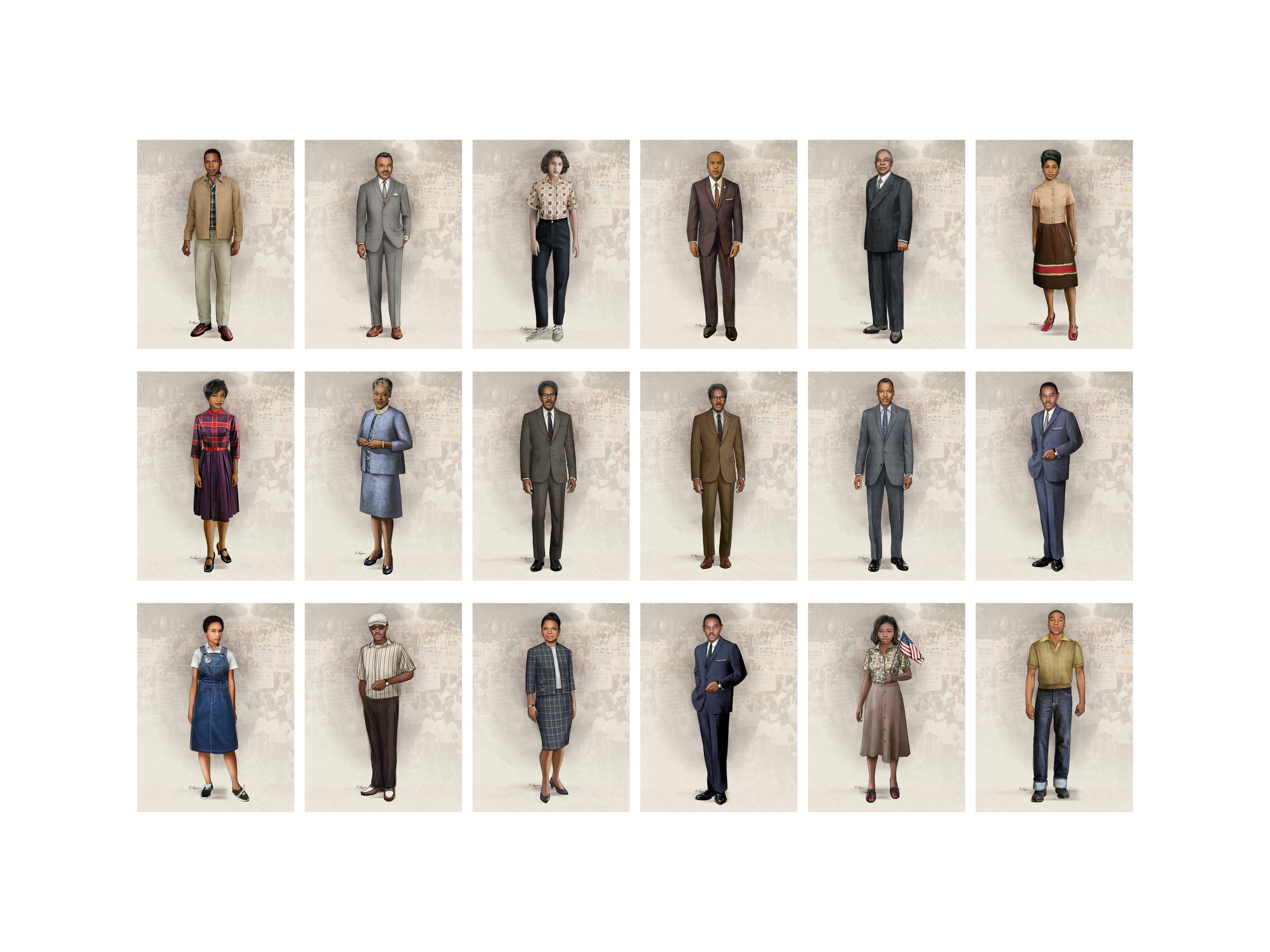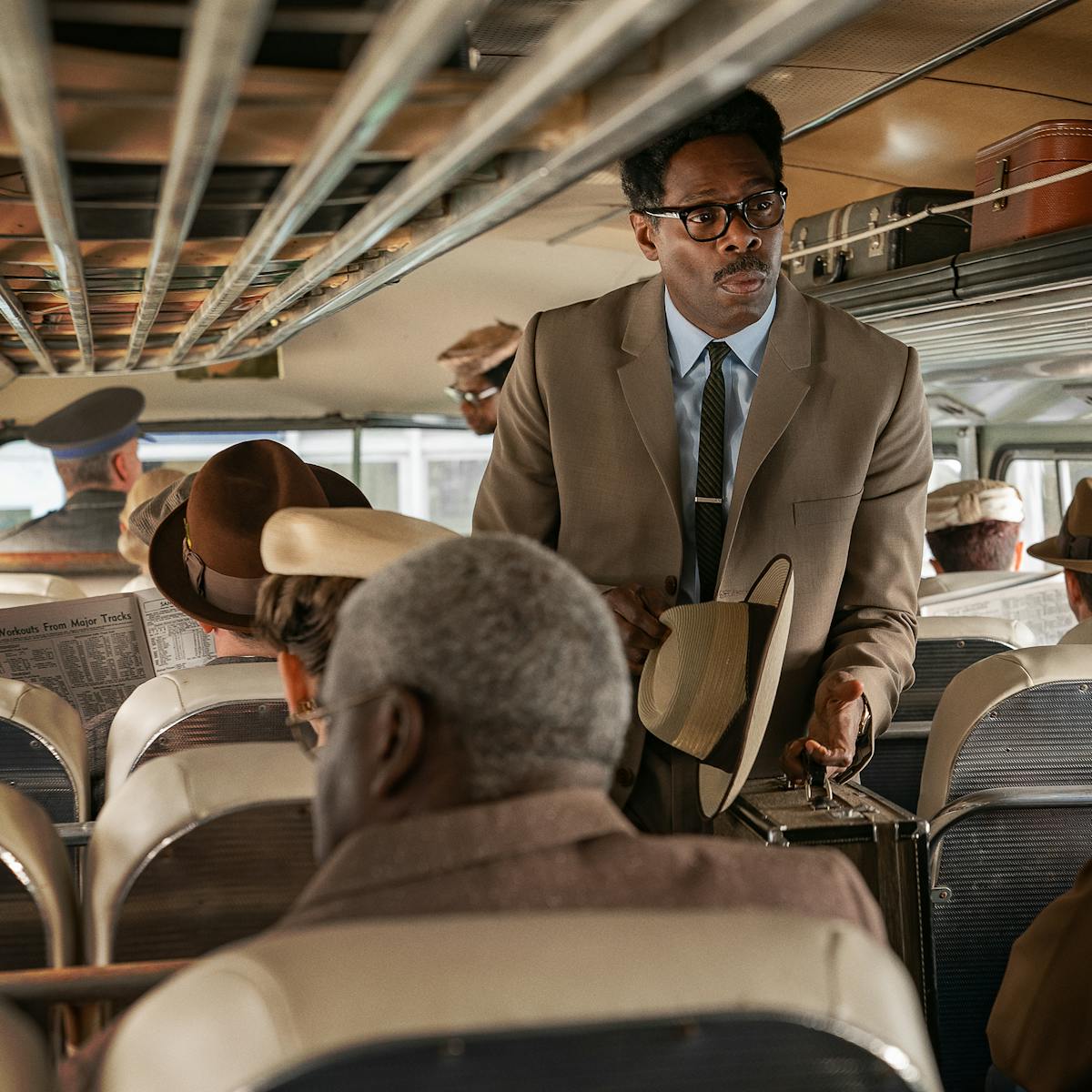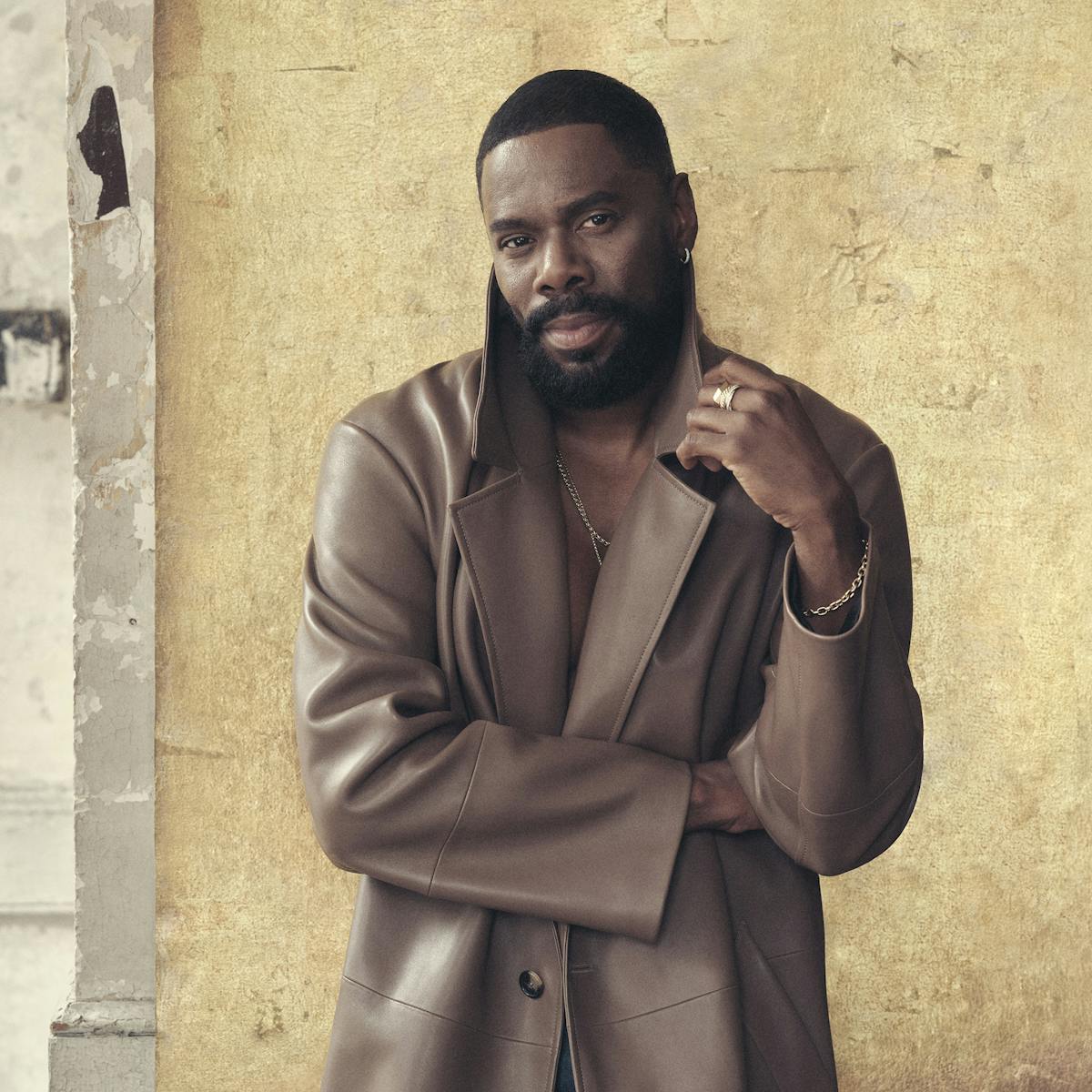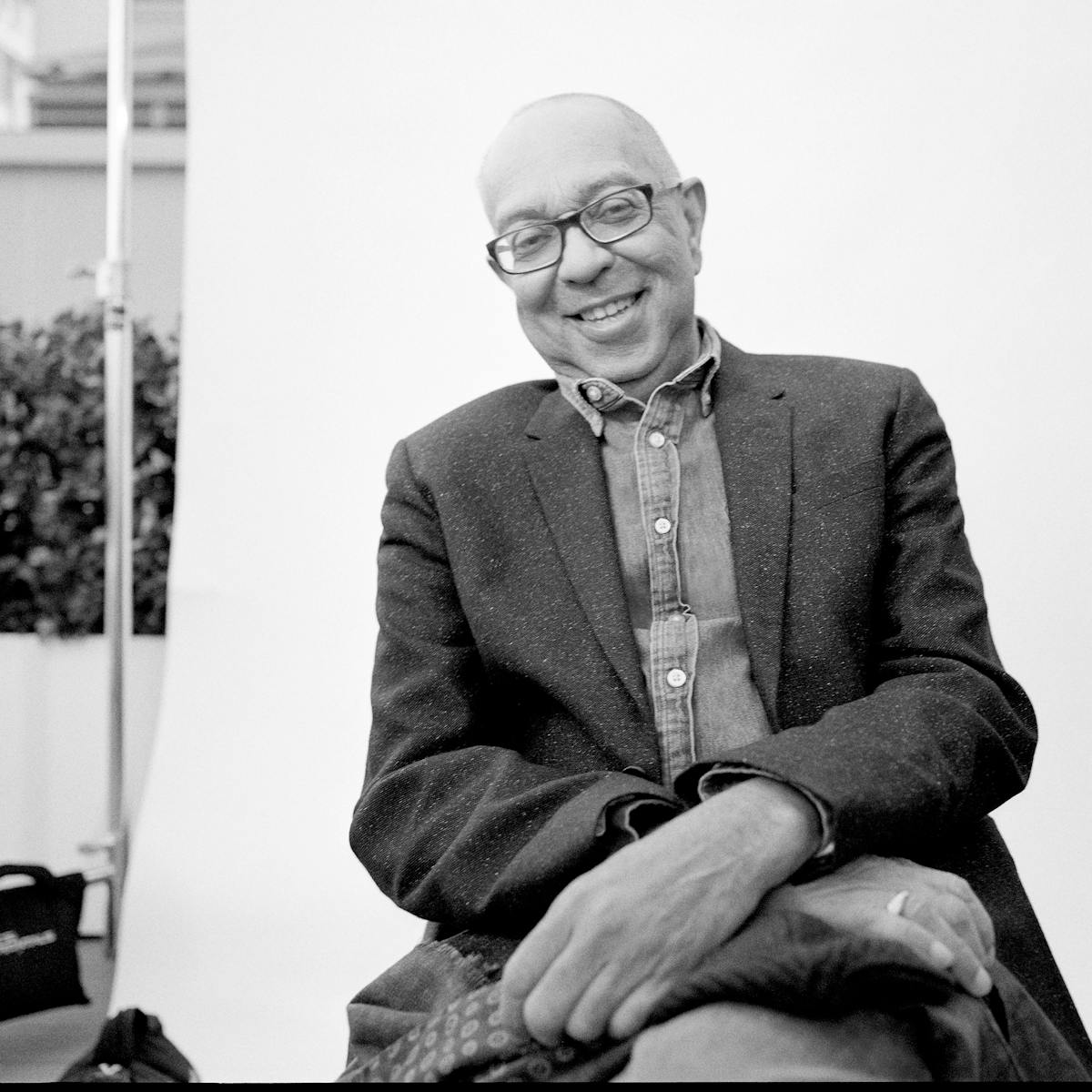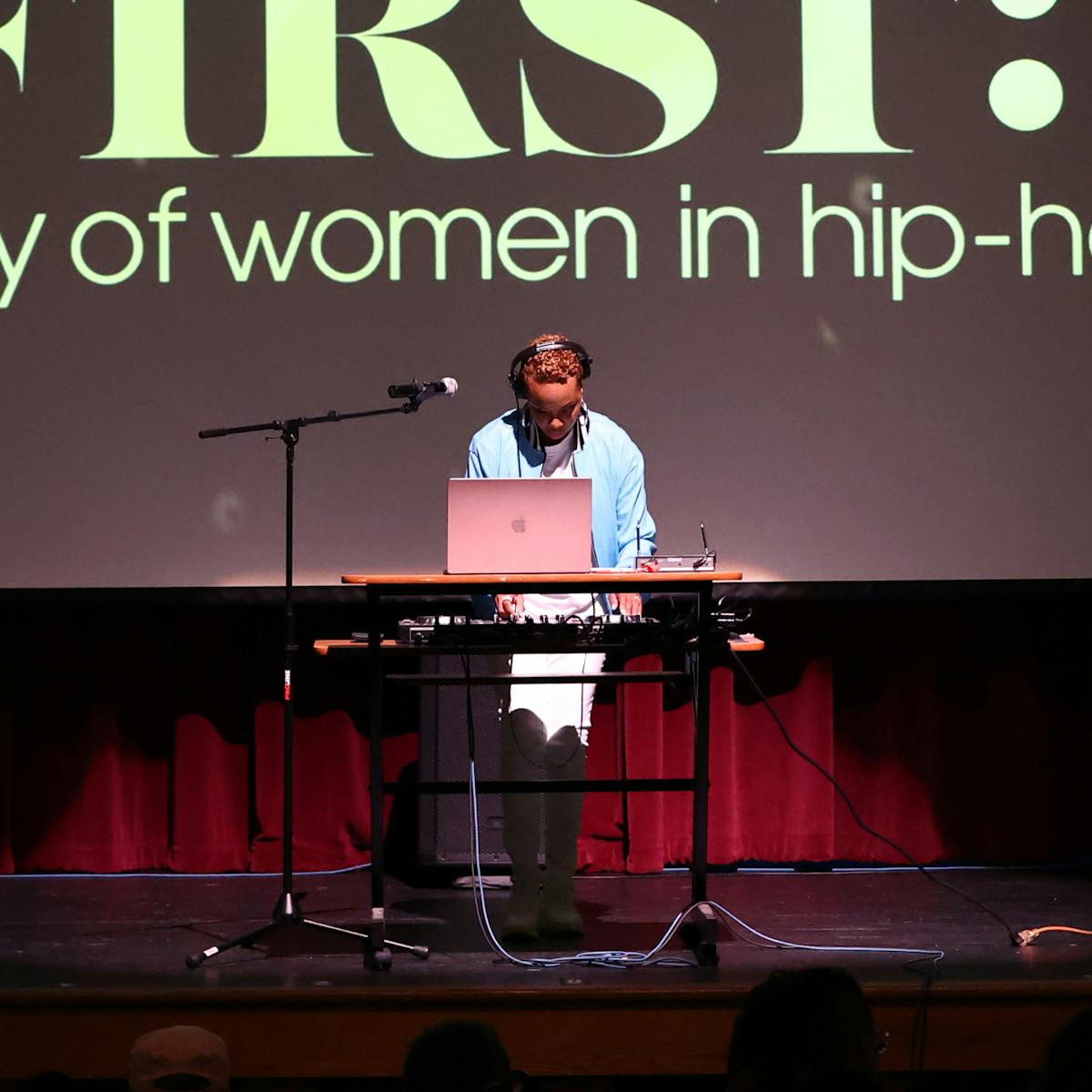Tony-nominated Toni-Leslie James lends her skills to the silver screen for George C. Wolfe’s Rustin.
Costume designer Toni-Leslie James has built an impressive career designing wardrobes for plays and musicals, starting with her first Broadway job, working on George C. Wolfe’s Jelly’s Last Jam. The four-time Tony-nominated designer, who currently co-chairs the Yale School of Drama design program, reminds me that she and Wolfe share not only a working relationship, but also a similar upbringing. “George and I come from the same generation. We were young children just as the civil rights movement [was happening], before the signing of the Civil Rights Act,” says James. “Our parents were involved in this struggle.”
James brought this history to her work on Wolfe’s Rustin, a period film highlighting the indispensable contributions of Bayard Rustin to the civil rights movement, specifically his work in organizing the March on Washington alongside Dr. Martin Luther King Jr. and introducing the reverend to nonviolent resistance. The activist, played with vibrancy by Colman Domingo, was nearly written out of history because of his homosexuality (at the time widely socially unacceptable and punishable by law in many states) and his former involvement in the Communist Party.
The significance of such a film isn’t lost on James. “My mother was extremely politically active,” she remembers of her childhood. “She organized buses and cars to take people to the vote. I mean, we had Mahalia Jackson to our home for dinner. I felt a little bit of history.”
With Rustin, James has her hand in reviving that history and dressing some of the civil rights movement’s most influential figures, including King (Aml Ameen), Adam Clayton Powell Jr. (Jeffrey Wright), Ella Baker (Audra McDonald), and the legendary gospel singer who once sat down to dinner in her home when she was a young girl. “I was a kid,” recalls James, “but I was totally aware of everybody that was involved in the making of this great civil rights march.” Jackson (Da’Vine Joy Randolph) makes an appearance at the end of the film, as she delivers her historic rendition of “How I Got Over” at the March on Washington.
Here James discusses her experience designing costumes for the expansive cast of civil rights leaders and activists in 1960s-set Rustin.
“Everyday people living their everyday lives”
I got involved in the movie from the beginning, which gave us enough prep time to do a lot of research on the march and clothing. When we do clothing, it’s not fashion; we’re looking for photographs of everyday people living their everyday lives. Research the 1960s and you’ll have Dior, Balenciaga, Bill Blass. Well, I’m not looking for that. We’re looking for photographs of families — at a picnic, going to church, and everything else. We use all of that pictorial research to create all of the clothing that goes into the film.
“Could you imagine him at home and he’s in a suit?”
It’s easy to dress the official face of the movement, [but] you rarely see a photograph of Martin Luther King where he does not look put together. So, it’s those unguarded, at-home, sitting-on-a-couch-with-a-beer-and-a-pizza moments that you’re really looking for.
Bayard, behind the scenes, does not have to be that buttoned up. A lot of the photographs that you see with Bayard, the sleeves are rolled up, the tie is loose. There may be a couple of photographs where you see Martin Luther King in one of the marches or walking around the neighborhood and he has on a cap and that sort of period Cuban, Havana shirt. We used [that look] because it was my one chance to show Martin really at home with his family. I mean, could you imagine him at home and he’s in a suit? I’ve seen those movies, okay? So I tried to make it not be that movie.
“Striving for a level of realness”
Working with George is about striving for a level of realness and authenticity. He’s like, No, that should be wrinkled; we need to knock this way down so they look like people. You don’t want background actors to take away from our principals, but you want them to totally enhance it. We’re doing 300 or 400 fittings a day, so then when we get everybody in a lineup, having that balance of color and print is so important to the authenticity.
“A costume designer’s dream”
For the principals, it was definitely important for us to have authentic pieces. Most of Colman’s suits were made. When we started the film, George said, “I don’t know why you have to do all that because he only needs two suits.” We basically copied the style of suit Rustin wore; it had to be a three-button suit with a center vent, no side vents. We found an incredible guy in Nyack who had an antique store, but in the back of his store were all of these vintage Hickey Freeman suits from the 1960s with the tags on them, never worn. So I think we bought about 10 or 12 suits from this gentleman. That was a costume designer’s dream. I’ve never seen anything like it.
“George C. Wolfe makes you dig really deep”
I have a long theatrical history with George Wolfe. I started working with him way back in 1989; my first Broadway show was a big musical, Jelly’s Last Jam, which George directed. And as he became “George C. Wolfe” with a big G.C.W., I was taken along for the ride, and it’s been an incredible journey. He reached out to me to design this movie, and it’s only the second film that I’ve done. I was so happy that he had enough confidence in me to ask me to bring my skills into this journey with Rustin.
George makes you dig deep and really bring it out. The reason the film looks so good is because he brings you to that next level, whether you like it or not. To be able to work with an artist that is able to really inspire and challenge you to present your best work as an artist, it’s an incredible opportunity.
